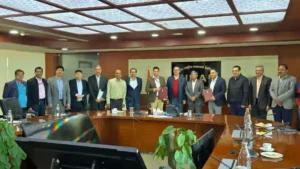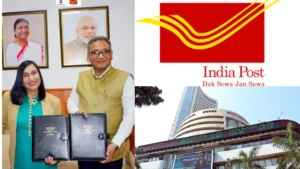In a significant step towards developing Indigenous technology, the Centre for Development of Telematics (C-DOT), signed an agreement with the Indian Institute of Technology Roorkee (IIT Roorkee) and Indian Institute of Technology, Mandi (IIT Mandi). Goal for the development of ‘Cell-Free’ 6G Access Points. Both the IITs are collaborating to develop this technology.
What is Centre for Development of Telematics (C-DOT)?
The Centre for Development of Telematics (C-DOT) is an Indian Government owned telecommunications technology development centre. It was established in 1984 with initial mandate of designing and developing digital exchanges. C-DOT has expanded to develop telecom equipment both wireless and wired since 1980’s. It has offices in Delhi, Bangalore and Kolkata. It is one of the few government organisations in India which have been appraised at Maturity Level 5 of CMMI-DEV v1.3.
Agreement signed attendees
The agreement was signed during a ceremony attended by CEO, C-DOT – Dr Rajkumar Upadhyay, principal investigator – Dr Abhay Kumar Sah from IIT Roorkee, co-investigator – Dr Adarsh Patel from IIT Mandi and Director C-DOT, Dr Pankaj Kumar Dalela.
Funding support to domestic companies
The agreement is signed under the Telecom Technology Development Fund (TTDF) scheme of Department of Telecommunications, Government of India, which has been designed for providing funding support to domestic companies, Indian startups, academia and R&D institutions involved in technology design, development, commercialization of telecommunication products and solutions. This scheme aims to enable affordable broadband and mobile services, playing a significant role in bridging the digital divide across India.
‘Cell-Free’ Massive MIMO
Traditional mobile networks use cellular topologies in which each cell is serviced by a single base station like 4G/5G to service mobile customers. ‘Cell-Free’ Massive MIMO (multiple-input and multiple-output) eliminates the idea of cells and cell boundaries by deploying several access points (APs) across a vast region to serve many user devices at the same time.
About this 6G project
This 6G project will focus on developing APs for enabling the upcoming 6G radio access networks and also aims to contribute to the 6G standardization activity, drive commercialization, generate intellectual property rights (IPRs), and develop a skilled workforce to support the emerging 6G landscape.
Dedication to advancing next-generation communication technologies
At the event, Dr Sah and Dr Patel affirmed their dedication to advancing next-generation communication technologies, aligning with Bharat 6G Vision launched by Prime Minister Shri Narendra Modi. They expressed their gratitude to Department of Telecommunications (DoT) and C-DOT for the opportunity to collaborate on this research, emphasizing that it bolsters efforts to enhance cutting-edge research capabilities and infrastructure in the telecom sector.
Indigenously designed & developed technologies
Dr Rajkumar Upadhyay, CEO, C-DOT underscored the key role of indigenously designed & developed technologies in meeting the specific requirements of communication for our diverse country, reaffirming the commitment towards “Atmanirbhar Bharat”. He also said this will help us generating IPRs in 6G domain and emerging technologies in the area of 6G.




 National Test House and NHAI Sign MoU to...
National Test House and NHAI Sign MoU to...
 India and Argentina Sign ICAR–INTA Work ...
India and Argentina Sign ICAR–INTA Work ...
 Department of Posts and BSE Sign MoU to ...
Department of Posts and BSE Sign MoU to ...







